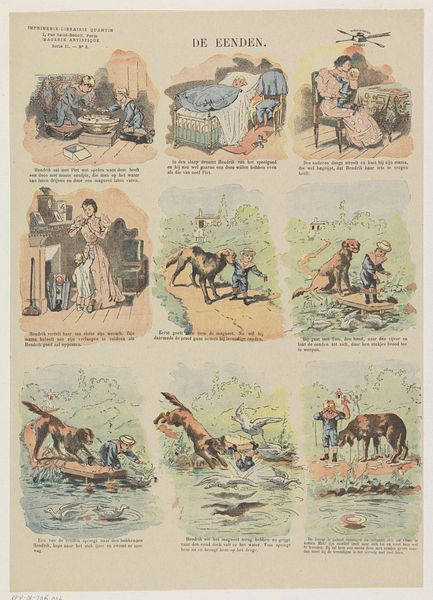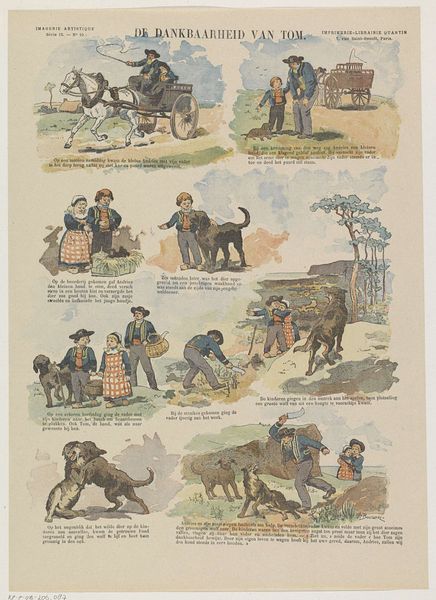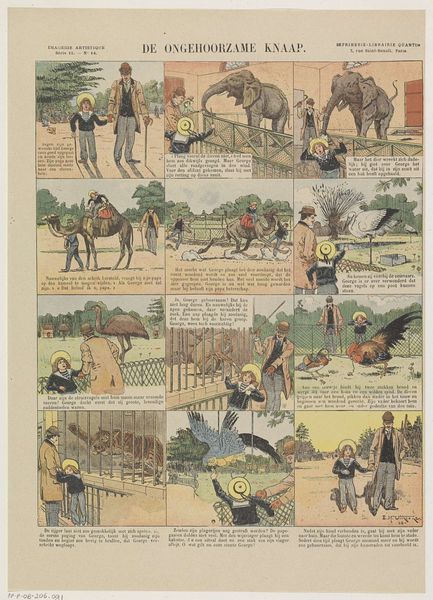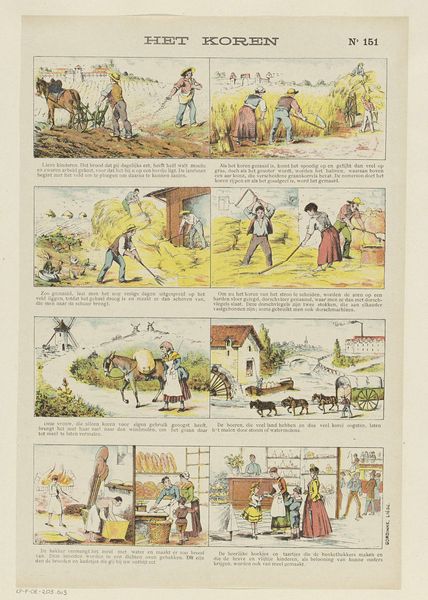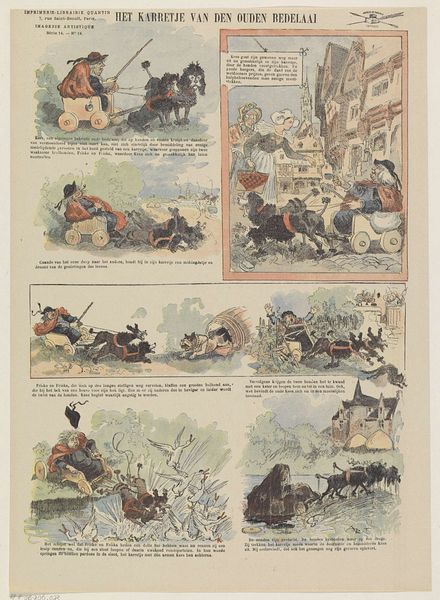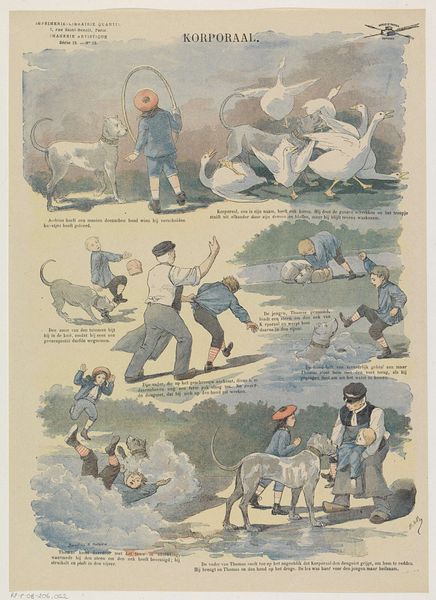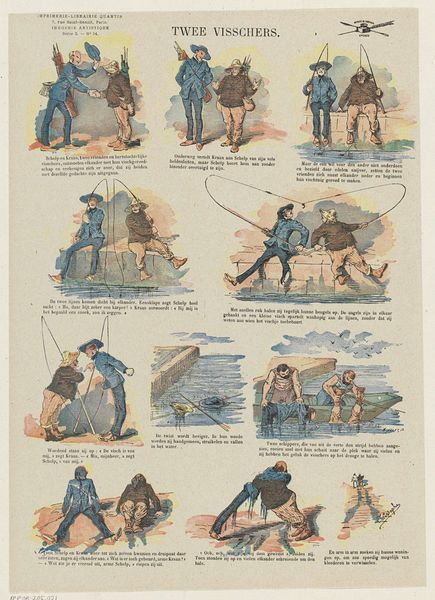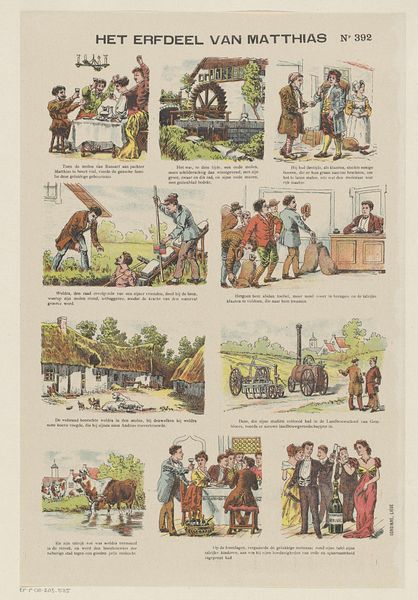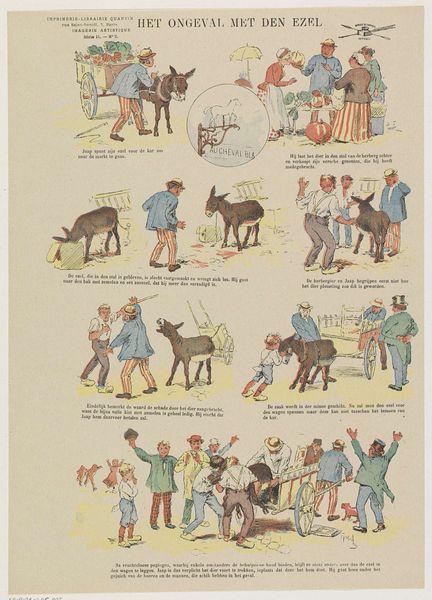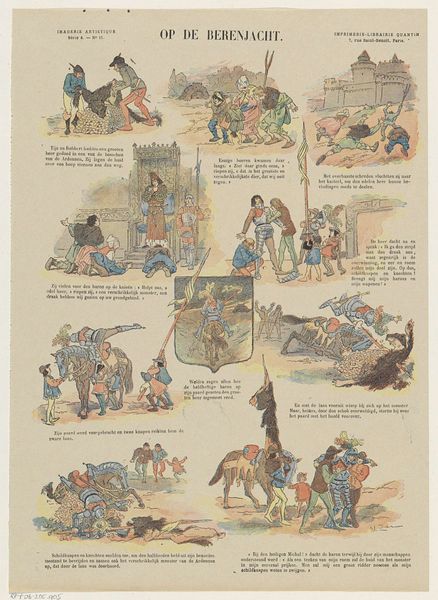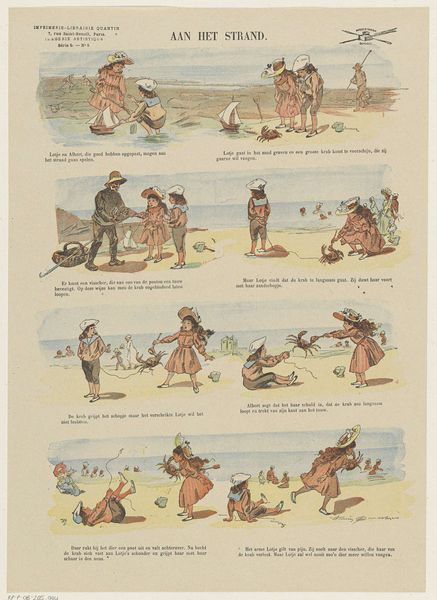
painting, print, watercolor
#
narrative-art
#
painting
# print
#
dog
#
watercolor
#
folk-art
#
genre-painting
#
realism
Dimensions: height 368 mm, width 264 mm
Copyright: Rijks Museum: Open Domain
Editor: This print is entitled "De lotgevallen van Azor" by J. Vitou & Co., dating from between 1876 and 1892. It seems to depict a series of scenes in the life of a dog. I'm struck by its folksy, narrative quality and the dog’s vulnerability in so many of the panels. How do you interpret this work? Curator: It's fascinating to see this visual narrative, particularly within the context of the late 19th century. "De lotgevallen van Azor," or "The Fortunes of Azor," seems to mirror the era's anxieties around class and social mobility, using the dog as a proxy. Notice how Azor's circumstances shift dramatically across these panels – from a domestic setting to the streets, encounters with other animals, and interactions with various humans. To what extent, do you think, does the dog’s representation highlight shifting attitudes about animals and their place in society during this period? Editor: That's an interesting point! I hadn’t considered the social commentary aspect. Perhaps Azor's journey also speaks to urbanization and displacement as traditional ways of life changed. Curator: Precisely! The artwork might reflect growing industrialization, connecting this particular canine narrative with concerns about economic and social justice. This prompts us to ask questions regarding the intersections of art and politics. Do you see parallels between Azor's journey and broader themes of social alienation and the struggle for survival within the capitalist system? Editor: That's made me see this work in a completely different light. I was drawn in by the story at first, but it sounds like there are layers of deeper meaning about societal issues. Curator: Absolutely. Considering these artworks within socio-historical and political narratives illuminates aspects that may go unnoticed with a simple appreciation of form. Hopefully, you will find many more intersectional areas within art history.
Comments
No comments
Be the first to comment and join the conversation on the ultimate creative platform.
